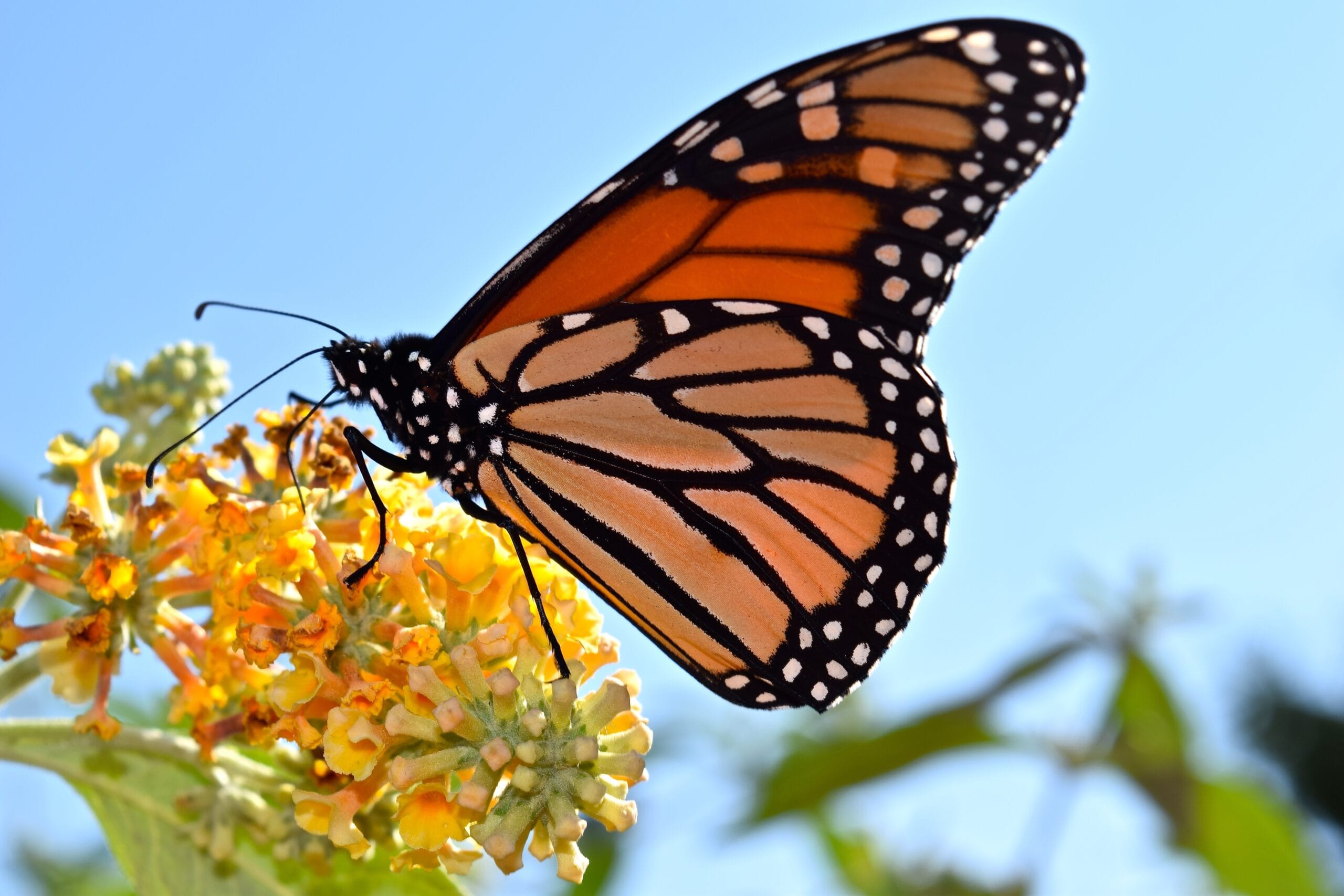Imagine stepping into a lush garden, where vibrant blooms dance in the gentle breeze and the air is alive with a symphony of colors. As your gaze sweeps across the flowers, a flutter of delicate wings catches your eye. It’s a butterfly, its wings adorned with a mesmerizing array of patterns and hues. From the shimmering blues of the Morpho to the ethereal transparency of the Glasswing, butterflies ignite a sense of wonder within us. In this article, we’ll explore the science behind this enchanting beauty, celebrating the role these fluttering gems play in nature and the efforts to protect their fragile existence.
Outshining the Competition: Unveiling Nature’s Living Rainbows
It’s hard to deny the charm of a butterfly. They’re like tiny jewels flitting through the air, each one a masterpiece of color and design. But have you ever stopped to wonder what makes them so beautiful?
The Science Behind the Sparkle: More Than Just a Pretty Face
Butterflies get their incredible hues from a few different sources. Some colors, like the deep blacks and browns, come from pigments in their wings. These are like natural dyes that absorb certain colors of light and reflect others. But the real magic happens with something called structural coloration.
Imagine this: butterfly wings are covered in tiny scales, so small you can barely see them. When light hits these scales, it bounces around and interferes with itself, creating iridescent colors that shimmer and change depending on the angle. It’s the same phenomenon that gives soap bubbles and opals their rainbow sheen!
And then there are the patterns! Spots, stripes, swirls – you name it, butterflies have it. These patterns aren’t just for show, either. They can help butterflies camouflage themselves, mimic other insects to confuse predators, or even attract mates with their dazzling displays.
Beyond Visuals: The Allure of Flight and Transformation
But a butterfly’s beauty goes beyond its looks. Watching them flit from flower to flower, their wings tracing delicate patterns in the air, is simply mesmerizing. And their life cycle, from a humble caterpillar to a winged wonder, reminds us that nature is full of surprises and transformations.
A Kaleidoscope of Colors: What is the Most Beautiful Butterfly?
Picking the “most beautiful butterfly” is like trying to choose the best flavor of ice cream – everyone has their favorite! What one person finds stunning, another might not even notice. It’s all a matter of personal taste. But, there are a few butterflies that consistently flutter to the top of the “most beautiful” list, captivating hearts worldwide.
The Blue Morpho is a strong contender, often stealing the show with its dazzling looks. Found in the lush rainforests of Central and South America, this butterfly is like a tiny piece of the sky, with wings that shine a brilliant, almost unreal, blue. The way they shimmer in the sunlight is nothing short of magical. And these aren’t your average, everyday butterflies – with a wingspan sometimes reaching 8 inches, they’re big enough to make a statement! This combination of beauty and rarity, unfortunately, makes them quite sought-after by collectors.
Another top contender, the Monarch, takes a different approach to beauty. These butterflies, found throughout North America, are like flashes of sunshine on the wing. Their bright orange wings, boldly accented with black and white markings, are impossible to miss. While not as large as the Blue Morpho, with a wingspan around 4 inches, their vibrant colors and friendly demeanor make them a favorite among butterfly enthusiasts.
The world of butterflies holds so much beauty, it’s nearly impossible to crown just one “most beautiful.” The Zebra Longwing, with its elegant striped pattern, the almost invisible Glasswing Butterfly, and the Peacock Pansy, with its intricate, eye-catching design, are just a few more examples of the breathtaking diversity found in nature. Each butterfly brings its own unique charm to the table, leaving it up to us to decide which one we find most captivating.
More Than Just a Pretty Face: The Purpose of Beautiful Butterflies
We’ve already talked about how gorgeous butterflies are, but did you know those vibrant colors and patterns serve a bigger purpose? It’s like they’re dressed to impress, but their outfits are about way more than just looking good!
Think about it – a butterfly in a cooler climate might have darker wings, absorbing as much heat as possible, kind of like a natural solar panel! On the flip side, butterflies in hotter areas might sport lighter colors to reflect the sun’s rays and stay cool. They even angle their wings to catch just the right amount of sunshine, talk about clever!
And those colors aren’t just for show, they’re like secret messages to other creatures. Bright colors often mean, “Hey, I taste awful, don’t even try me!” Some butterflies even have patterns we can’t see! They use ultraviolet light to signal to each other, especially when it’s time to find a mate.
Speaking of attracting a mate, butterflies know how to stand out from the crowd. Their dazzling colors and patterns help them snag a partner, and those shimmering iridescent colors? They’re a sign of good health and strong genes.
But butterflies are masters of disguise too. Flip over those flashy wings and you might find dull, muted colors that help them blend in with their surroundings, hiding from hungry predators. Some butterflies are even sneakier, mimicking the appearance of poisonous insects to avoid becoming a snack.
Let’s not forget their crucial role as pollinators! As they flit from flower to flower, they’re actually helping plants reproduce, ensuring we have a beautiful and diverse world.
There’s still so much to learn about these fascinating creatures. Scientists are constantly making new discoveries about their behavior, their life cycle, and how they interact with the environment. One thing’s for sure, butterflies are more than just a pretty face – they’re a vital part of our planet’s ecosystem.
Embodiments of Transformation: Why We Find Them So Captivating
Butterflies aren’t just pretty faces; they’ve got a lot going for them! They suggest this amazing idea of transformation and hope, kind of like a caterpillar turning into something totally unexpected. And they are not just pretty to look at, they’re actually super important for our world too.
Think about it: they start as these crawly caterpillars munching on leaves, and then they go into this little cocoon, like a secret makeover chamber. When they come out, boom! They’re totally different— these delicate creatures with wings that shimmer and shine. It’s like nature’s way of showing us that change can be a really beautiful thing.
And those crazy colors and patterns? They aren’t just for show. Some of them are like warning signs to scare away any hungry birds or spiders, while others help them soak up just the right amount of sunshine. Those intricate designs on their wings are like secret codes for camouflage, fooling predators or attracting a mate. They’re like little flying works of art!
But butterflies are also hard workers. They flit from flower to flower, sipping nectar and spreading pollen along the way. They might not know it, but they’re helping plants reproduce and keeping our ecosystems healthy. They’re like tiny, winged gardeners! Every time you see a butterfly fluttering by, remember that it’s not just a pretty sight, it’s a little reminder of the incredible beauty and power of nature.
Rarity and Beauty Entwined: The World’s Most Elusive Butterfly
We’ve talked about a lot of amazing butterflies, but now comes the question everyone’s curious about: which one takes the crown for both rarity AND beauty? It’s a tough contest, but the title often goes to the Palos Verdes Blue Butterfly. And let me tell you, this isn’t just any ordinary butterfly. This little creature, with its delicate wings painted a soft, almost glowing blue, is as rare as it is stunning. Sadly, it’s also incredibly rare – we’re talking critically endangered.
So, why is this little blue wonder so rare? Well, it’s really picky about where it lives. It only calls a tiny part of California, the Palos Verdes Peninsula, its home. And even within that small area, it’s only found in a few specific spots where its favorite food plants grow. Unfortunately, those spots are disappearing.
You see, as humans build more and more, they take away the wild spaces that creatures like the Palos Verdes Blue need to survive. On top of that, invasive species – the bullies of the plant world – are moving in and pushing out the native plants this butterfly relies on. It’s a tough situation, but there’s hope!
Dedicated people are working hard to protect this beautiful butterfly. They’re creating safe havens, planting its favorite food, and even carefully raising caterpillars in captivity to give the population a much-needed boost.
Now, the Palos Verdes Blue might be the rarest, but the title of “most beautiful” is always up for debate, right? There are other contenders out there, each with its own unique charm. Take the Miami Blue, for example. This critically endangered butterfly is another beauty with wings like shimmering blue jewels. And then there’s the Sinai Baton Blue, the smallest butterfly in the world. It might not be as flashy as some, but its tiny size and delicate pale blue coloring are pretty special.
The takeaway? Butterflies, especially these rare beauties, are precious. They’re a reminder that our world is full of incredible creatures, and it’s our job to protect them. By learning about them, appreciating their beauty, and supporting conservation efforts, we can all do our part to make sure these fluttering wonders grace our planet for generations to come.
Want to Learn More? Dive into the World of Butterflies!
If you’re feeling captivated by these colorful creatures, there are tons of ways to explore further. Websites like Ranker and Active Wild are bursting with fascinating facts and gorgeous photos. Want to see butterflies in action? Check out documentaries from National Geographic or BBC Earth – their footage will blow you away!
And for all you budding photographers out there, remember that capturing the beauty of a butterfly takes patience and skill. There are plenty of online resources and communities where you can learn from experienced butterfly photographers and get tips on how to snap that perfect shot.
- Crypto Quotes’ Red Flags: Avoid Costly Mistakes - June 30, 2025
- Unlock Inspirational Crypto Quotes: Future Predictions - June 30, 2025
- Famous Bitcoin Quotes: A Deep Dive into Crypto’s History - June 30, 2025
















